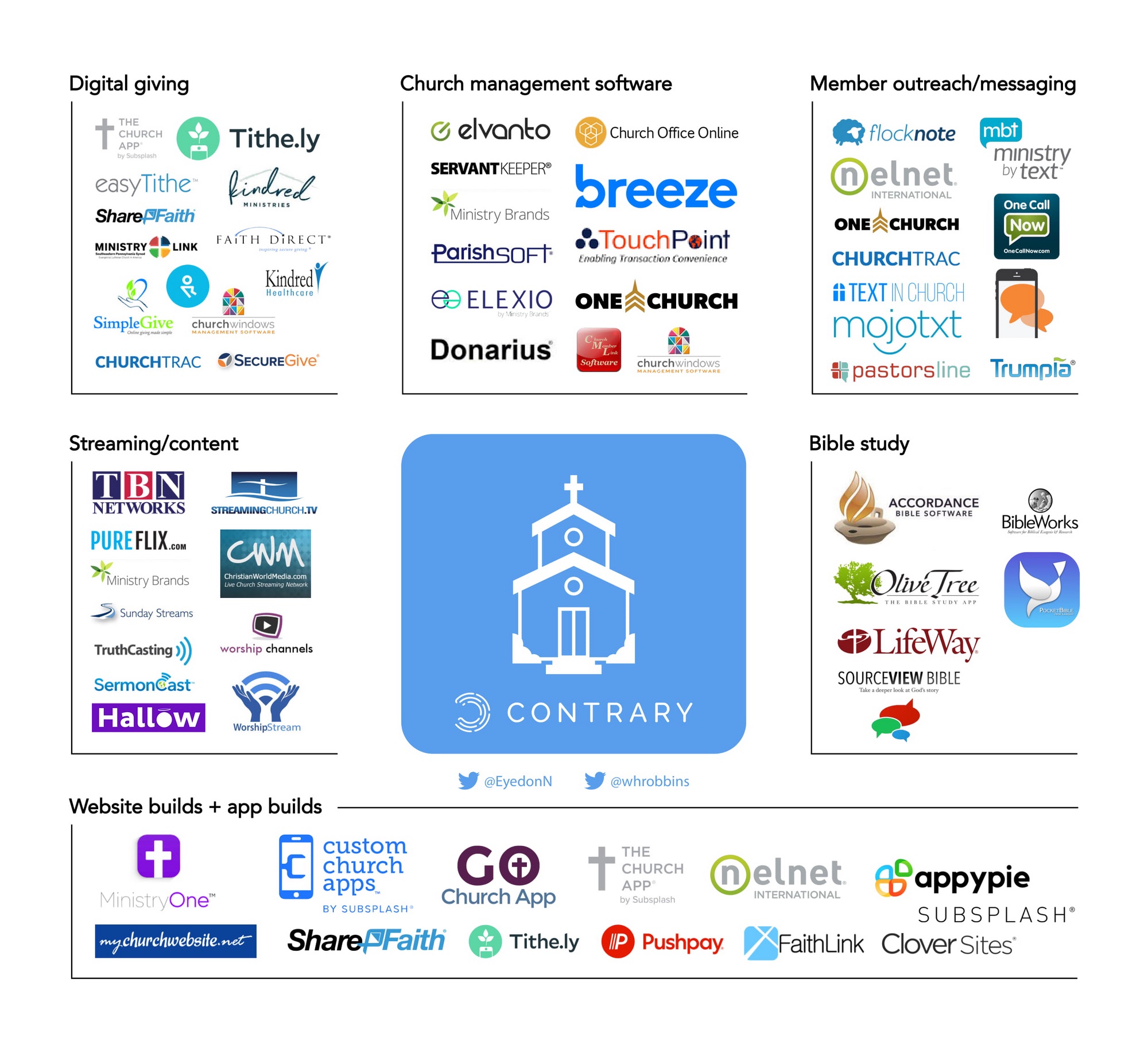There are more than 300,000 congregations in the U.S., and entrepreneurs are creating billion-dollar companies by building software to service them. Welcome to church tech.
The sector was growing prior to COVID-19, but the pandemic forced many congregations to go entirely online, which rapidly accelerated growth in this space. While many of these companies were bootstrapped, VC dollars are also increasingly flowing in. Unfortunately, it’s hard to come across a lot of resources covering this expanding, unique sector.
Market map
In broad terms, we can split church tech into six categories:
- church management software (ChMS)
- digital giving
- member outreach/messaging
- streaming/content
- Bible study
- website and app building
Horizontal integration is huge in this sector, and nearly all the companies operating in this space fall into several of these categories. Many have expanded through M&A.

Image Credits: Contrary Capital (opens in a new window)
The categories
- Church management software: Almost all are SaaS businesses, mostly using cloud hosting. Typical features include workflow management, virtual check-in for events, a database of members and online scheduling. Examples include Elvanto and One Church.
from TechCrunch https://ift.tt/317ZE02
via IFTTT
Comments
Post a Comment